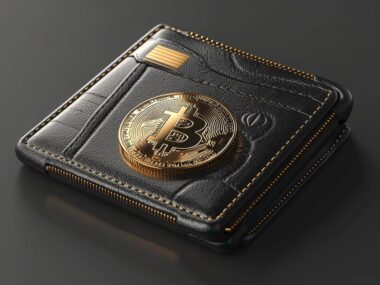Introduction
Decentralized finance, also known as DeFi, is a nascent and innovative sector emerging within the blockchain and cryptocurrency space. It aims to recreate traditional financial instruments such as exchanges, lending, asset trading, and insurance protocols on public blockchains without intermediaries like brokerages, banks and other centralized institutions. DeFi promises greater financial inclusion, transparency, security and lower costs through decentralization and open-source code.
However, many fundamental concepts within the DeFi ecosystem remain unfamiliar to most people outside of the cryptocurrency community. The lack of centralization and different technical implementations cause conceptual confusion for newcomers. Additionally, decentralization introduces governance, risk and legal complexities not seen in traditional finance.
What is decentralized finance?
At its core, decentralized finance refers to financial applications that are designed with an open-source protocol that runs without a central third-party intermediary. In other words, DeFi aims to eliminate the middleman by leveraging blockchain technology and smart contracts.
Traditional financial systems rely on centralized intermediaries like banks, brokerages, payment processors and insurance companies to facilitate financial activities including payments, lending, trading, derivatives and more. These centralized institutions act as gatekeepers for activities on their centralized systems.
In contrast, DeFi applications operate in a decentralized peer-to-peer network where transactions are validated by consensus of the entire network rather than by a central party. This consensus mechanism records all transactions in an immutable blockchain. Financial activities like lending, trading, payments are facilitated through smart contracts – computer programs stored on the blockchain that automatically execute the terms of a contract.
Smart contracts running on public blockchain networks allow the creation of various decentralized applications (Dapps) that empower individuals to access financial services without traditional intermediaries. Some examples of DeFi Dapps include decentralized exchanges, lending protocols, interest bearing accounts, insurance programs and synthetic assets.
All activities on these DeFi Dapps are transparent and participants interact directly according to the rules laid out in open-source smart contracts for all to examine. While removing intermediaries aims to reduce costs and counterparty risks, it also introduces governance and security challenges due to lack of centralized control.
How does DeFi work?
At a technical level, DeFi builds upon blockchain networks that enable peer-to-peer transactions. These blockchains act as decentralized financial rails for the entire ecosystem. The two most prominent blockchains powering DeFi are Ethereum and Binance Smart Chain.
Ethereum
Ethereum was the first platform to introduce Turing-complete smart contracts allowing developers to build decentralized applications. It is still the dominant backbone of DeFi with over 90% of total value locked. Ethereum supports the ERC-20 technical standard which defines a common list of rules for fungible tokens to follow. This allows tokens to be easily swapped on exchanges.
Users of Ethereum hold cryptocurrencies like Ether (ETH) and ERC-20 tokens in crypto wallets like MetaMask. These wallets connect to the Ethereum network and hold the private keys to sign transactions. Users can interact with DeFi smart contracts by connecting their wallet to a Dapp’s website interface. The Dapp acts as a portal for users to deposit funds into smart contracts or initiate transactions.
When a user deposits funds into a smart contract, the contract holds those assets and carries out predefined functions codified in its programming based on certain triggers. For example, lending protocols allow borrowing and lending of assets via smart contracts following interest rates and collateral requirements laid out in code. Decentralized exchanges run entirely on-chain order books that match buyers and sellers.
Every transaction initiated on Ethereum requires payment of small amounts of Ether in Gas fees to compensate the network validators (miners) who prioritize and bundle transactions into new blocks. Gas itself is not a currency but rather the pricing unit used to pay for computational steps during transactions.
Binance Smart Chain
Binance Smart Chain is a newer programmable blockchain launched by major crypto exchange Binance in 2020. It is fully Ethereum Virtual Machine (EVM) compatible and supports smart contracts and digital assets pegged to Ethereum tokens via the BEP20 standard. It aims to scale DeFi by offering faster transaction speeds an initially lower gas fees compared to Ethereum.
Binance Smart Chain works similarly to Ethereum with a few distinctions. Users hold crypto assets like BNB, BEP20 tokens in supported wallets and interact with Dapps by connecting their wallets. Transactions also require payment of gas fees but denominated in BNB instead of ETH. Smart contracts on Binance Smart Chain are cheaper and quicker to deploy compared to Ethereum. However, its technical infrastructure, liquidity and decentralized nature are inferior to Ethereum currently.
Core DeFi protocols
With the blockchain rails in place, developers have built various decentralized applications leveraging the ability to automate financial activities through open-source smart contracts. Here are some of the most prominent and innovative DeFi protocols:
Decentralized Exchanges (DEX)
DEXes allow for peer-to-peer exchange of cryptocurrencies and digital assets without a centralized third party. Popular DEXes include Uniswap, Sushiswap, Curve and PancakeSwap. Users can trade directly from their Ethereum or Binance Smart Chain wallets by adding liquidity or placing orders. DEX protocols match orders using on-chain automated market makers (AMM) instead of traditional order books.
Lending Protocols
DeFi lending allows users to borrow and lend digital assets via smart contracts following interest rates set algorithmically. Popular lending Dapps include Aave, Compound, MakerDAO and Cream. Users can deposit crypto-assets to earn interest or take out flash loans using collateral. Flash loans allow borrowing large sums without collateral for short durations.
Yield Farming
Yield farming is a controversial technique for earning high yields by constantly recycling funds across multiple lending protocols, liquidity pools and yield optimization strategies. It involves depositing supported assets to liquidity pools in exchange for liquidity provider (LP) tokens. These LP tokens are then staked on yield optimizers like Yearn Finance that automatically shift funds to lending protocols offering highest rates. However, risk of impermanent loss and smart contract hacks exist.
Derivatives
Derivatives like options allow betting on asset prices without directly purchasing them. Popular DeFi options protocols include Opyn and Nexus Mutual while Synthetix is a major platform for on-chain synthetic assets that mirror the price of real-world assets like stocks, commodities, currencies and market indexes. Users can long or short markets directly from their wallets.
Insurance
Insurance Dapps provide compensation in case of exploits and hacks on DeFi protocols. Major players include Nexus Mutual which crowdsources risk assessment and premium payments into a decentralized insurance fund and PoolTogether which provides no-loss lotteries as an insurance substitute.
Economics of DeFi
The economic principles powering DeFi introduce both opportunities and challenges that are unfamiliar in traditional systems. Here are some key aspects to understand:
Token Incentives
Almost all DeFi protocols introduce their own protocol-specific tokens to bootstrap liquidity and reward users. These governance tokens can be earned as rewards, staking yields or transaction fees. This encourages participation and securing of the network. However, their valuation is often speculative lacking real-world use.
Impermanent Loss
Providing liquidity to AMM DEX pools or yield farming pools carries risk of impermanent loss – the opportunity cost of not holding the deposited assets. Price divergence between asset pairs in pools leads to permanent loss of funds beyond trading fees if withdrawn during deviation.
Smart Contract Risk
Since DeFi relies entirely on open-source code, vulnerabilities in core protocols can lead to catastrophic exploits and loss of funds as seen with previous hacks. Constant auditing is needed along with smart contract insurance. Decentralized autonomous organizations (DAO) are formed to govern protocols via on-chain voting.
Custody & Privacy
Users must self-custody funds in non-custodial wallets and be responsible for wallet security and backups. This introduces technical challenges for the average user compared to traditional banking. All transactions on public blockchains are also pseudonymous compromising privacy to some degree.
Access & Regulations
Regulatory ambiguity around the legal status of cryptoassets prevent widespread mainstream access. Geographic limitations and know-your-customer (KYC) rules by centralized exchanges hinder inclusiveness promised by DeFi. Standard financial regulations concerning money transmission, lending, trading do not fully apply yet.




